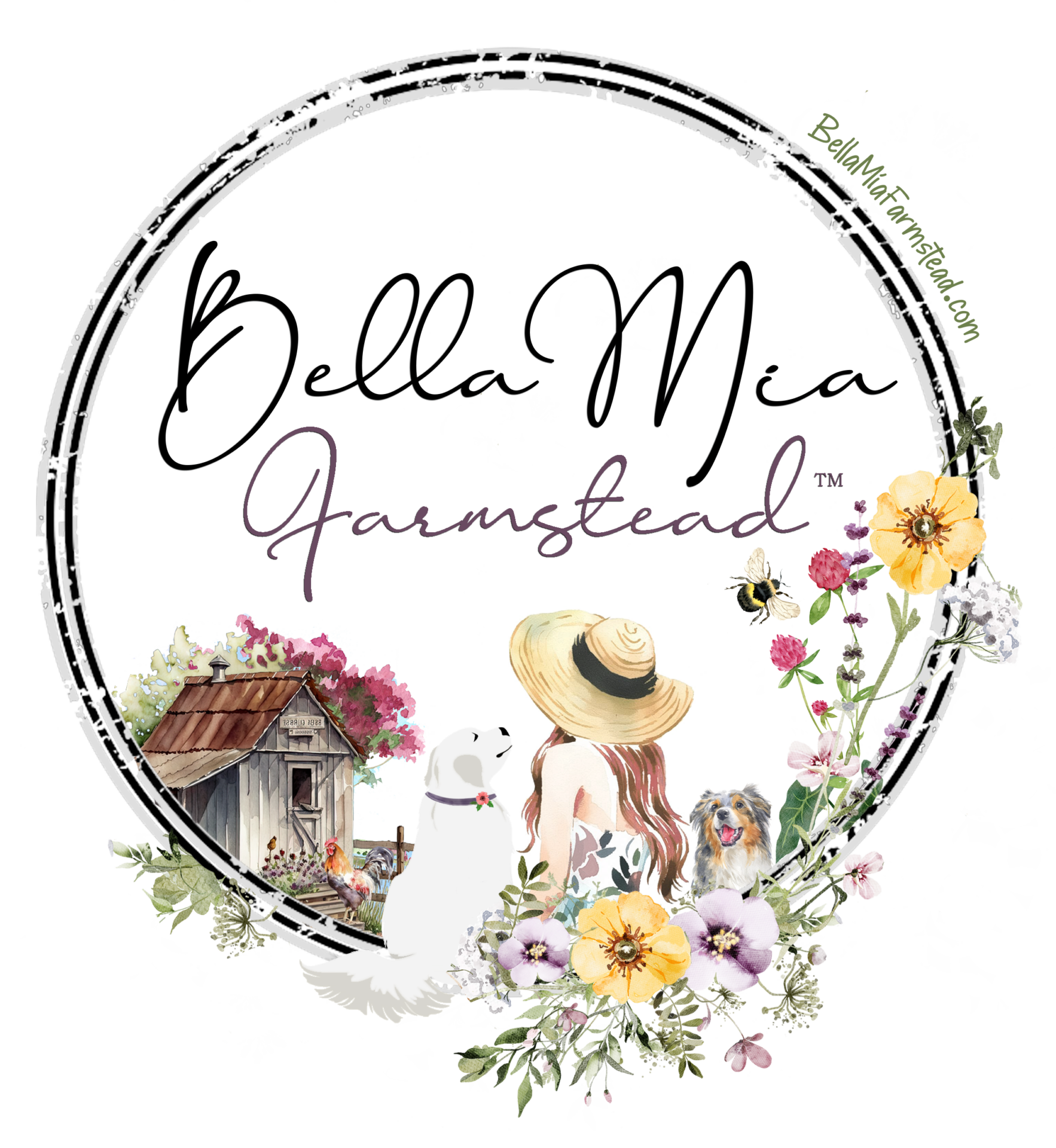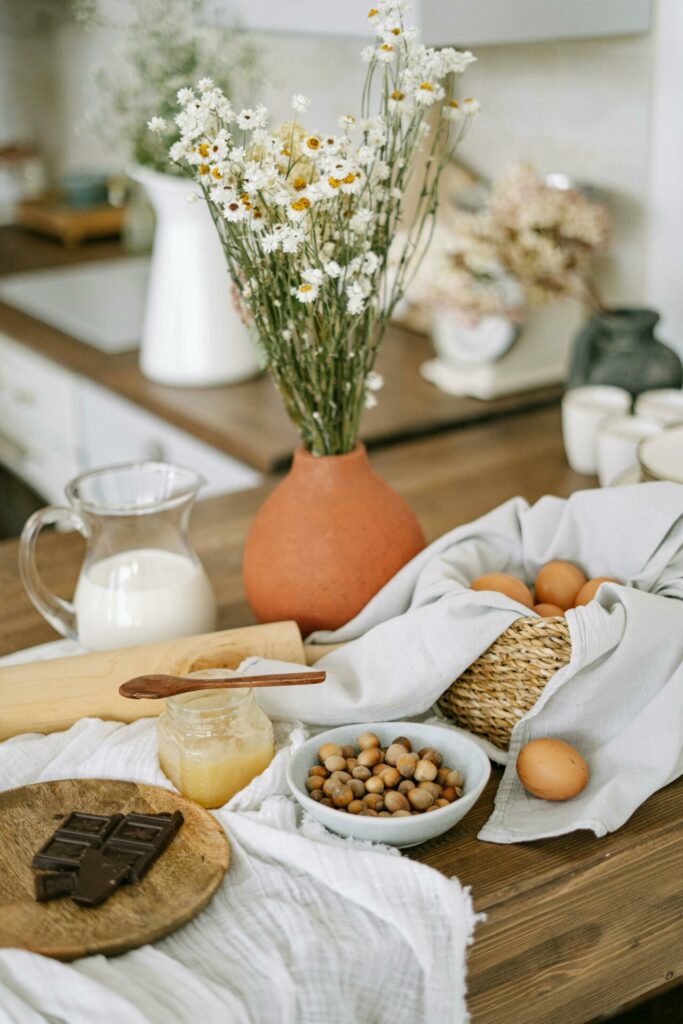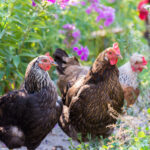Your cart is currently empty!
The Ultimate Beginner’s Guide to Homesteading
Homesteading is a way of life that revolves around self-sufficiency, sustainability, and independence. For many, the allure of homesteading lies in growing your own food, raising animals, and living closer to nature. It’s a lifestyle that fosters creativity, self-reliance, and a deeper connection to the earth. But if you’re new to homesteading, the journey can seem overwhelming. Where do you even start? What do you need to know, and how do you begin without feeling like you’re in over your head?
In this comprehensive guide, we’ll walk you through everything you need to know to get started with homesteading, from the basics to more advanced tips. By the end, you’ll feel confident enough to take the first step toward creating your homestead. Plus, my Homesteading Course is packed with detailed guidance to support you every step of the way!
1. What is Homesteading?
At its core, homesteading is about living more sustainably and becoming more self-sufficient. Whether you’re growing your own food, raising animals, or producing your own energy, homesteading is a lifestyle that reduces reliance on external systems and focuses on the self-sustaining elements of life.
Homesteading can look different for everyone, depending on the space available, personal interests, and climate. For some, it’s a small garden and a few chickens in the backyard. For others, it might involve living off the grid in a cabin in the woods with a variety of livestock and large gardens. Whatever your vision is, homesteading is about taking control of the resources you consume and creating a life that is both fulfilling and sustainable.
2. The Homesteading Mindset
Before diving into the practicalities, it’s important to understand the mindset required for successful homesteading. The homesteading lifestyle is not just about what you do—it’s also about how you think. It requires patience, adaptability, and a willingness to learn new skills.
Key Characteristics of a Homesteading Mindset:
- Patience: Homesteading is a long-term journey. You won’t see instant results with gardening, animal raising, or other homesteading activities. It takes time to establish a homestead, grow food, and learn new skills.
- Problem-solving: You’ll face challenges, from unexpected weather to animal health issues. Homesteaders often need to get creative to solve problems with limited resources.
- Self-reliance: A big part of homesteading is doing things for yourself—whether it’s growing your own food, fixing broken equipment, or building a shelter.
- Resourcefulness: You’ll often need to find new ways to use what you have. Repurposing materials, finding free resources, and making do with what’s available are all crucial aspects of homesteading.
By fostering the right mindset, you’ll be better prepared to handle the ups and downs of your homesteading journey.
3. Start Small: Your First Steps
As a beginner, it’s essential to start small. You don’t need a massive piece of land or expensive equipment to begin homesteading. In fact, trying to take on too much at once can be overwhelming and costly.
Where to Begin:
- Start with a small garden: If you have a small plot of land or even a balcony, gardening is one of the easiest and most rewarding ways to begin homesteading. Start with a few easy-to-grow crops like tomatoes, lettuce, or herbs.
- Raise a few chickens: Chickens are a great beginner livestock option. They are relatively low-maintenance, provide eggs, and can help with pest control in your garden. A basic chicken coop can be built on a budget with recycled materials.
- Learn basic homesteading skills: Instead of jumping into large projects, take time to learn essential skills. You can start with basic DIY projects like building simple garden beds, making compost, or learning how to preserve food through canning or dehydrating.
By starting small, you’ll avoid feeling overwhelmed and have time to learn new skills before expanding your homesteading operations.
4. Planning Your Homestead
Once you’ve decided where to start, planning is crucial. Proper planning can save you time, money, and effort in the long run. There are a few key areas to consider as you plan your homestead.
What to Plan:
- Location and space: If you already have land, assess how much space is available for gardening, livestock, and structures. If you don’t have land yet, consider how much space you’ll need and the climate conditions in that area.
- Budget: Determine your budget for initial expenses. Starting homesteading can require some investment (e.g., for seeds, tools, equipment, or livestock), but it’s important to set a realistic budget to avoid overspending.
- Time commitment: Homesteading requires ongoing attention. Make sure you plan how much time you can realistically dedicate to your homestead each week. If you work full-time, starting with manageable projects that you can maintain on evenings and weekends is a good strategy.
Taking the time to plan ahead can help ensure that you stay organized and focused as you work toward building your homestead.
5. Essential Tools for Beginners
While you don’t need to buy a lot of expensive equipment to start homesteading, there are a few essential tools that can make your life easier and help you get the job done.
Must-Have Tools:
- Garden tools: Start with basic gardening tools like a shovel, hoe, rake, and pruners. You don’t need to buy high-end tools, but having a few quality tools will make gardening much easier.
- Compost bin: Composting is a crucial aspect of homesteading, especially for gardeners. You can easily build a compost bin with pallets or buy a simple one. Compost will enrich your soil and help reduce waste.
- Hand tools for DIY projects: A good hammer, saw, screwdriver, and drill are essential for building structures, repairing equipment, or making small homesteading improvements around your property.
- Livestock supplies: If you’re raising animals, you’ll need basic equipment like feeders, waterers, and housing. Chickens, for example, need a secure chicken coop and a place to nest.
As you become more experienced, you’ll acquire additional tools for more advanced projects, but these basics will help you get started.
6. Growing Your Own Food
Growing your own food is one of the most rewarding parts of homesteading. Not only does it save you money, but it also allows you to control what you eat and how it’s grown. When you’re starting as a beginner, it’s best to focus on a few easy-to-grow crops and learn as you go.
Top Beginner-Friendly Plants:
- Tomatoes: One of the most popular garden crops, tomatoes are fairly easy to grow and can be used in a variety of dishes.
- Lettuce and leafy greens: Lettuce, spinach, and kale grow quickly and can be harvested throughout the season.
- Herbs: Growing herbs like basil, mint, and parsley is easy, and they don’t require a lot of space. They also add great flavor to your meals.
- Carrots and radishes: Root vegetables like carrots and radishes are low-maintenance and ideal for beginners.
Once you’re comfortable with the basics, you can expand to more challenging crops like potatoes, beans, and peas. You can also experiment with growing fruit trees or berry bushes for added variety.
7. Raising Livestock
While gardening is a fantastic way to start homesteading, many homesteaders also raise animals. Livestock provides food, income, and manure for fertilizing your garden. However, raising animals is a significant responsibility, so it’s important to start small.
Beginner-Friendly Livestock:
- Chickens: Chickens are the most beginner-friendly livestock. They provide fresh eggs and can be raised in small spaces.
- Rabbits: Rabbits are another great choice for beginners. They are easy to care for and reproduce quickly, providing meat and fur.
- Goats: If you have enough space, goats are wonderful for beginners. They provide milk, meat, and fiber, and they’re relatively low-maintenance.
Start with a small number of animals to ensure you can care for them properly. As your confidence and knowledge grow, you can expand your livestock operation.
8. Becoming Self-Sufficient
One of the most exciting aspects of homesteading is the potential for self-sufficiency. Homesteaders strive to reduce their dependence on stores and external systems by growing their own food, raising livestock, and producing their own energy.
Ways to Increase Self-Sufficiency:
- Canning and preserving: Learn how to preserve your harvest by canning, freezing, or drying your fruits and vegetables. This will ensure you have food available year-round.
- Energy production: If you’re interested in going off the grid, consider installing solar panels or a wind turbine to generate your own electricity. This can be a big investment initially, but it’s an excellent long-term strategy for self-sufficiency.
- Natural water collection: Set up a rainwater harvesting system to collect water for irrigation and livestock. This reduces your dependency on municipal water sources.
The more you learn and do on your own, the closer you’ll get to becoming fully self-sufficient.
Final Thoughts: Your Homesteading Journey Begins Now!
Homesteading is a deeply rewarding lifestyle that allows you to live more sustainably, become more self-sufficient, and build a stronger connection to nature. By starting small, focusing on essential skills, and taking the time to learn, you can build a successful homestead even on a limited budget.
If you’re ready to dive deeper into homesteading, my Homesteading Course is the perfect resource to guide you through every step, whether you’re just starting out or looking to expand your homestead skills. From gardening to livestock care, DIY projects, and more, you’ll find all the resources you need to create a thriving homestead.
Start your homesteading journey today, and embrace the independence and fulfillment that comes with living closer to nature!

About THE AUTHOR
Hi, I'm Tameron! AKA: Mama Red. I'm the owner of Bella Mia Farmstead, a woman owned heirloom seed business located in Western New York. I enjoy sharing with you my love of gardening, nature, animals, being self-sustainable and homesteading. I offer advice on growing beautiful things, the amazing benefits of herbs and write about my love for my pets and chickens (I have a flock of my own, along with quail). I manage all aspects of the business myself, with the exception of my two lovely girls who think they're my supervisors 🙄 Bella (Great Pyrenees) and Willow (Australian Shepherd) along with my two other dogs Ryder and Koda (German Shepherds), and my three cats (June, Uller and Taz). Bella Mia Farmstead translates to "My Beautiful Farmstead". I hope you enjoy our products, articles and the website as much as I enjoy sharing this journey with you. I'm off to go play in the dirt... 🧤💐❤️




